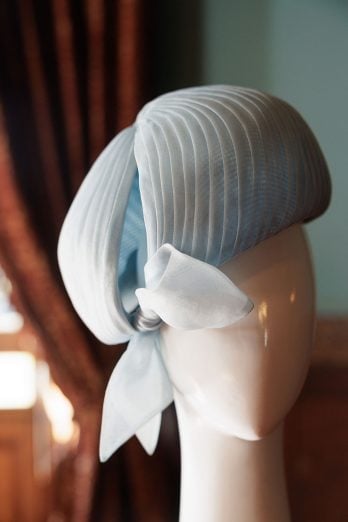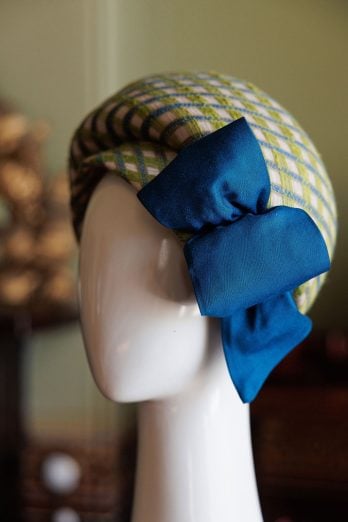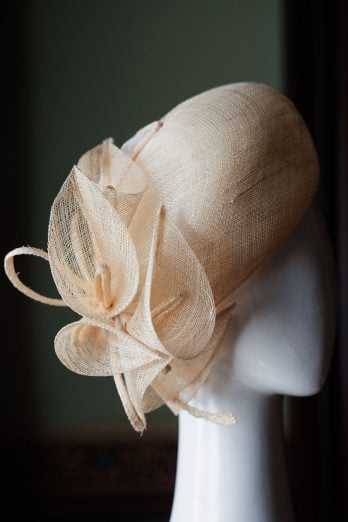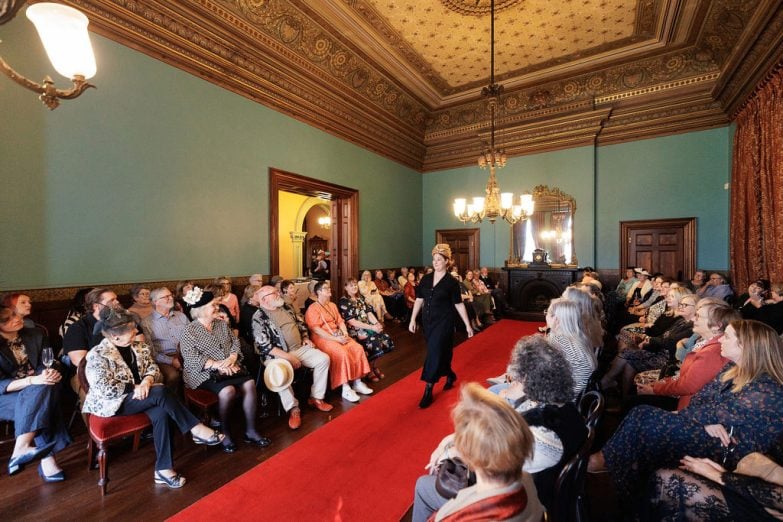An extraordinary collection of hats has been donated to the National Trust by celebrated Adelaide milliner Gwenda Baker. Regional Operations Manager Laura Evans explores this stylish acquisition and the life of its maker.
The National Trust of South Australia’s costume collection is one of the largest and most significant in Australia. Preserving garments and accessories dating from as early as 1752, it serves as a vital repository of our sartorial history and reflects the evolving cultural and social fabric of the State.
Among recent acquisitions is an extensive collection of hats, antique millinery materials and accessories generously gifted by esteemed milliner Gwenda Baker. Dating from the mid 1800s to the early 2000s, the collection includes hats worn by earlier generations of her family and some made by millinery students, however the vast majority are Baker’s own creations.
Offering a unique lens into the artistry and craftsmanship of millinery in the 20th century, the collection not only enriches the National Trust’s holdings but also provides invaluable insights into fashion trends and societal norms. Gwenda Baker’s contribution is also particularly noteworthy because of her prominent role in Australia’s millinery landscape. Her expertise and knowledge shaped the millinery craft for more than 50 years.
Baker left school at the age of fourteen to join the war effort in the final years of the Second World War. The Manpower Office allocated her to G. & R. Wills where she made gloves for servicemen. Her commencement salary was around £1 per week (about $2 in decimal currency). After the war, she began an apprenticeship at the Gawler Place warehouse of wholesale milliners and importers J.W. Richmond and Co Ltd, where Baker worked for twelve years, travelling extensively to visit milliners across Europe. In an era when ladies did not leave home without donning a hat and gloves, she was then invited to take charge of the model workroom at Miller Andersons department store, which made exclusive creations for some of the State’s best dressed women.
Baker’s dedication and influence extended beyond creation. She imparted her knowledge to students as a lecturer for 30 years at the South Australian Institute of Technology, which transitioned through several changes to become part of TAFE. Several of her millinery students went on to become lecturers and acclaimed milliners themselves. Baker also taught people how to make hats and French flowers as recreational subjects. And she lent her discerning eye as a judge of the Royal Adelaide Show’s millinery and French flower exhibits, retiring at the age of 80 after 50 years of service. In testament to her enduring impact on the field, she was inducted into the Millinery Association of Australia Hall of Fame in 2009.
The significance of Baker’s donation to the National Trust was celebrated at a special sold-out event held at Ayers House during South Australia’s History Festival in May. Where Did She Get That Hat? – A Fashion Parade of Hats showcased an exquisite selection from her collection, offering attendees a captivating journey through the evolution of millinery styles and techniques over nearly a century. The event not only highlighted the aesthetic beauty of the pieces but also underscored the cultural narratives embedded within them, illustrating how fashion serves as a reflection of societal changes.
By embracing Baker’s collection, the National Trust of South Australia reinforces its commitment to preserving the state’s rich cultural heritage. Such donations are pivotal in ensuring that future generations have access to tangible links to the past, fostering an appreciation for the artistry and history that define South Australia’s identity. Through exhibitions and educational programs, the National Trust continues to bring these stories to life, honouring the legacy of contributors like Gwenda Baker and inspiring ongoing engagement with the state’s diverse heritage.
OPPOSITE: An appreciative audience at the Ayers House event, taking in a 1960s shot silk, machine-stitched hat with six-section crown and small peak (image by James Field Photography).
FROM LEFT:
Gwenda Baker at the Ayers House event, wearing a hat she made in 2009 from sinamay and osprey feathers; a model-styled flat fur felt hood with feather spine trim; and a hat from the 1970s covered with blue organza bias strips placed individually and sewn to look like pleating, with bow trim.
Images by James Field Photography.








